Session Data
- Date: 7/09/2023
- Time: 19:44 – 00:16 UT
- Seeing: II. Good – Slight
- Transparency: I. Extremely Clear.
- Temp: 14.9C,
- Air Pressure: 1027mb,
- Humidity: 77%,
- Dew Point: 11.1C,
- Wind Speed: 3mph
- Average FWHM: 4.2
- SQM:19.8 magn/arcsec^2
Scope: Altair 250mm RC f/5.3 Camera: ZWO ASI 294MC Pro, No Filter. Dark subtracted and Flat fielded.
Session Notes:
While I like the simplicity of imaging in mono, I wanted to see if using a OSC camera would enhance the EAA experience. There have been times when it would be nice to see star colour and maybe enjoy some close double stars with a colour contrast, or see if a nebula I was observing was an emission or reflection nebula, just by looking at its colour.
I managed to borrow a friends ASI 294MC PRO for a bit, so tonight is its first total clear night outing. Out of camera saturation is quite muted, so to identify is a star is just going off white either towards blue or yellow, you need to wack up the saturation in Shapcap’s histogram to make it more obvious.
I have also rotated the camera, so that all the images are displayed North up and West to the left.
Most of these images are the result of stacking 15 second subs using Sharpcap’s ‘Live Stack’ feature. The majority of these range from a total integration time of between 2 and 7 minutes. Anything more than this and you are getting into deep sky photography territory, which really isn’t the purpose of EAA.
NGC6709, HT94
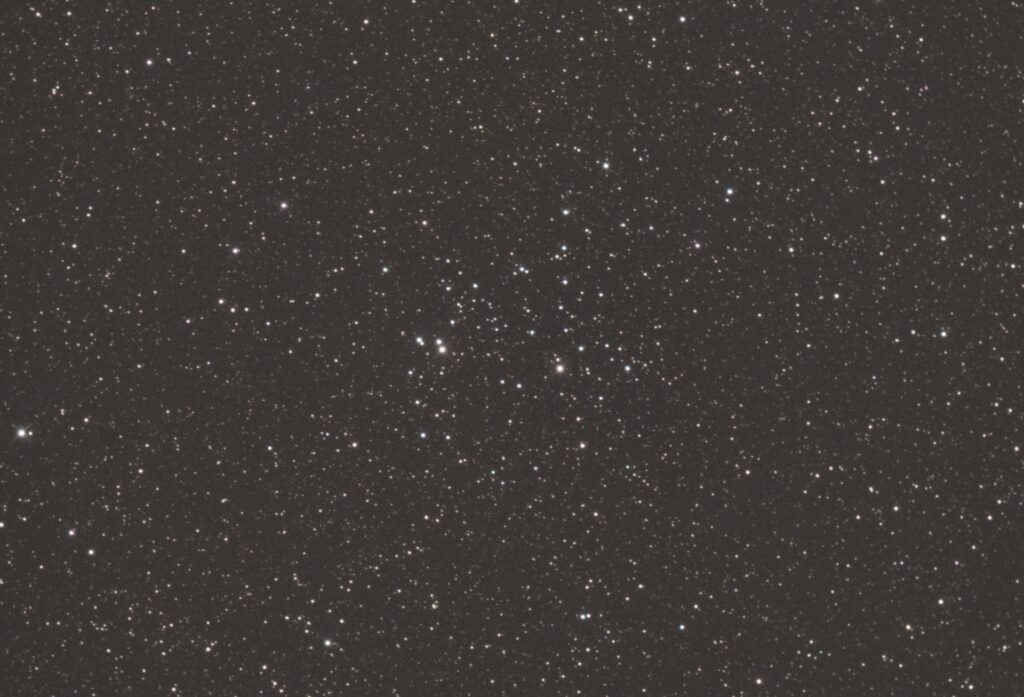
The cluster is quite compact at about 11 arc min in diameter. The first thing you notice are the two bright orange stars at the centre of the frame. One HD 229716, K0, 9 mag to the right and BD+10 3697, K5, 9 mag to the left. These form the base of two slanted triangles with each of the peaks offset slightly to the East and West.
The rest of the cluster is made up of about fifty 11 to 13 mag stars.
SJM calls it the Flying Horse Cluster and if you look at his drawing, I see it, but really!
NGC404, HT5
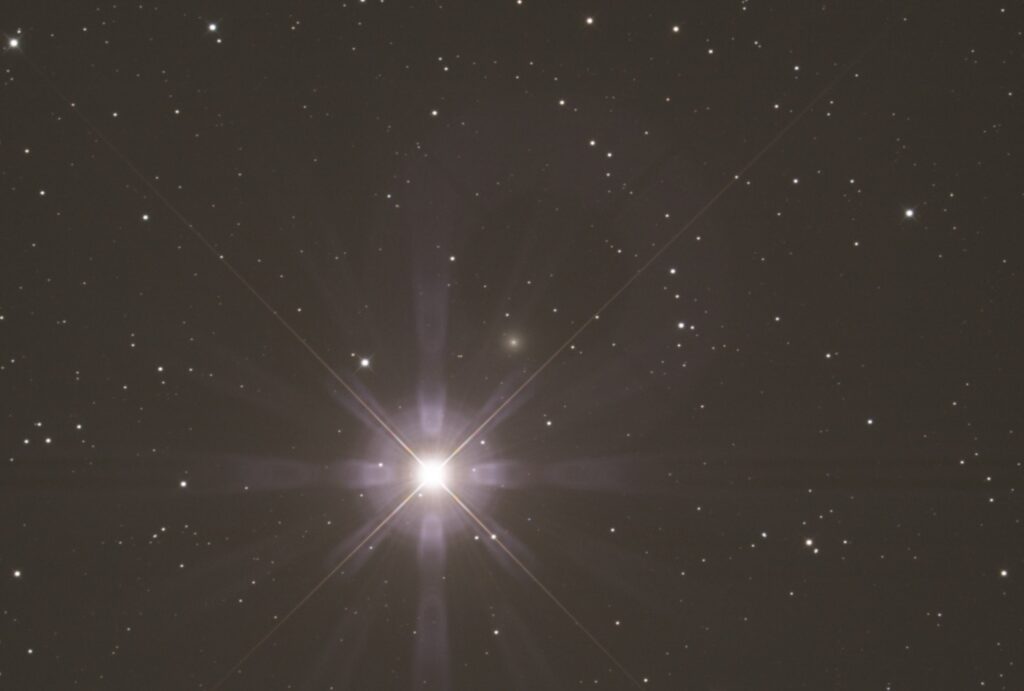
You wonder how this was ever seen visually as it’s only 7 arc min to the North West from the 2.4mag double Mirach. You know it’s not a star as there is a 1-arc min halo around the bright core.
Image integration Time; 330 secs
OMe 1, HT107
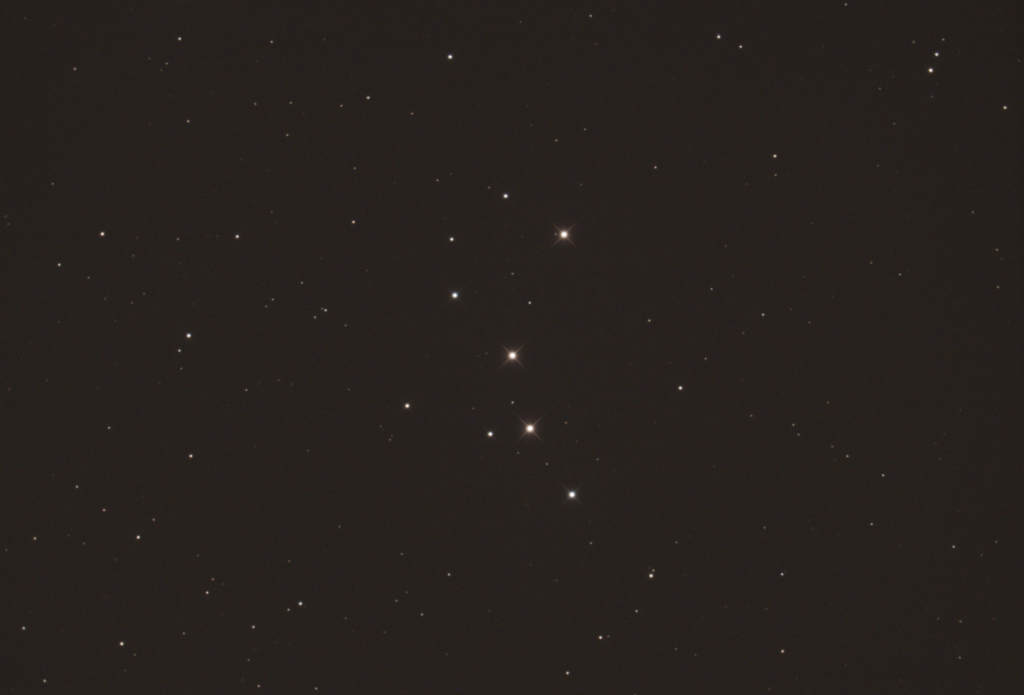
One of SJM min Asterisms – the Little Ladle.
Consisting of four bright 8 mag stars in an arc to the West of centre and running North South. The three remaining 10 and 11 mags stars make up the ladle bowl.
The three brighter Orange stars from the top are a K0, K0 and K2 spectral type.
NGC1023, HT10
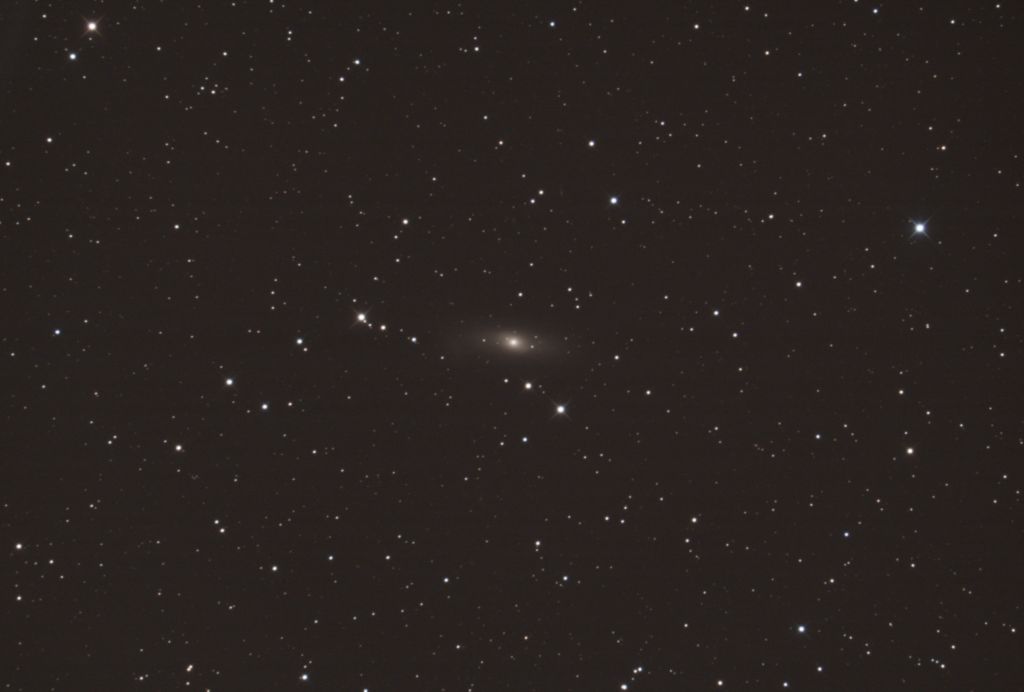
This galaxy looks a little like a cat’s eye. The soft but bright core is surrounded by a 4 arc min diameter inner glow that is oriented slightly clockwise North East/ South West. The outer halo is about 8 arc min in diameter. According to Sky tools NGC1023 has a companion galaxy NGC1023A just on the Eastern edge of the outer halo. After 8 mins of integration, you can make out a hint of this, but only because you know something is there.
There are three small fuzzy flecks to the North, but nothing is being labelled – will search for these later.
I did try and find some of these very faint galaxies in the image later, but surprisingly most of these have not been identified. or example, the one marked in the image below.
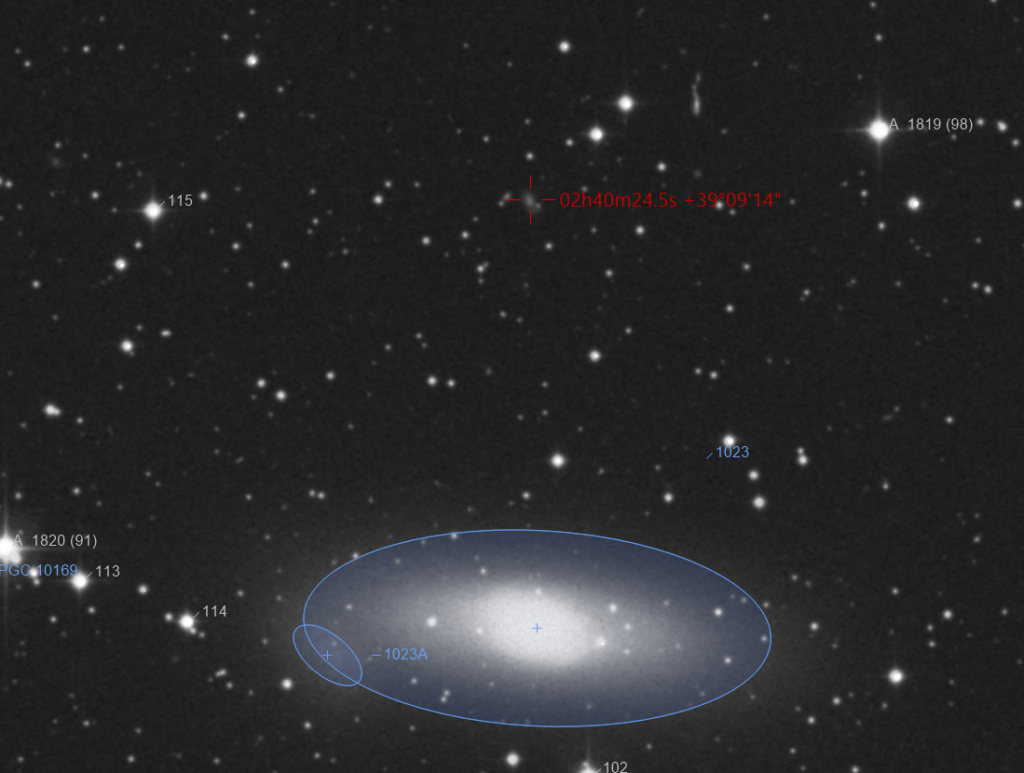
If you type those coordinates into Simbad, you get nothing closer than [FAB2017] NGC1023 star35 46 arc sec away. To me this looks just like a small PGC galaxy.
Image integration Time; 435 secs
NGC1245, HT2a
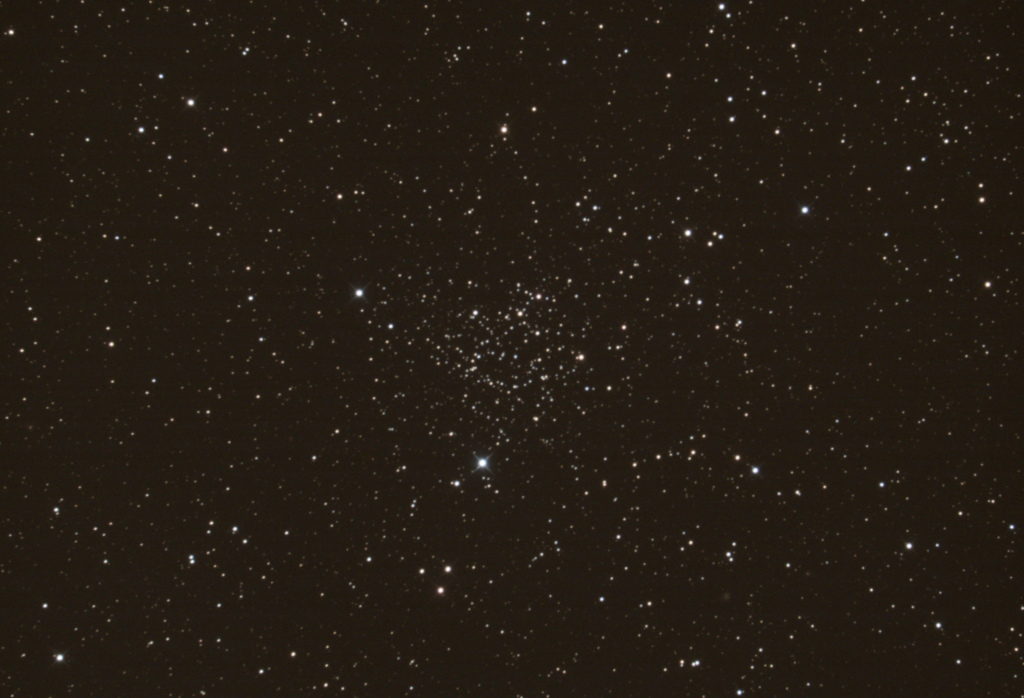
Well you wouldn’t miss this very tight open cluster. Just south of centre is a very Blue/White A0 spectral type, 9 mag star HD20023. To the East is another ( HD20077, A0 ) and this forms the base of a triangle enclosed cluster of stars than has the final point 9 arc mins to the Northwest ( DB+46 00706 9 mag) . There are a number of orange stars within the cluster, the brightest being an 11 mag and 3 arc mins to the West ( TYC 03315-0706 1). There is no spectral type given in Simbad, but it does have a B-V: 1.770 (Tycho) so is quite red) The rest of the stars are 12 to 14 mag.
14 arc mins to the Southwest is the 16-mag galaxy PGC12019. Looking closely, you can see the stellar core and and an almost circular halo.
Image integration Time; 150 secs
NGC1502, HT23
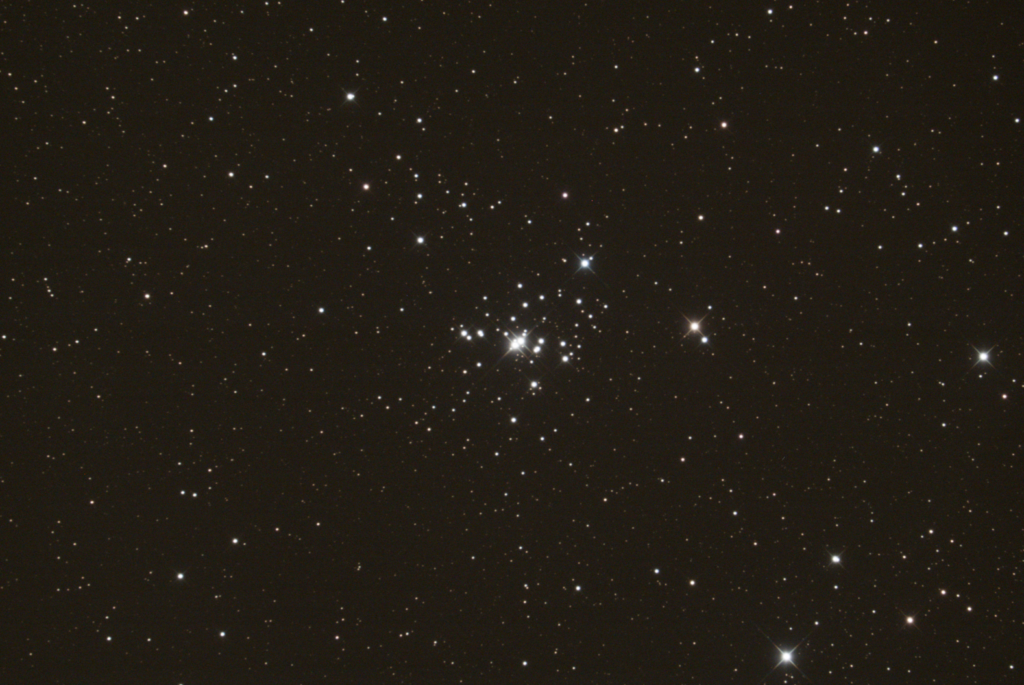
Another asterism. I don’t know where some of these names come from. SJM calls this The Jolly Roger. Even with an explanations, I can’t see it.
At the centre of this cluster are two very bright 7 mag stars. One is a variable SZ Cam and the other is HD 25638. These and a further 11 stars make up a very compact grouping.
The cluster is triangular in shape – imagine a Stone Age flint arrowhead with its tip pointing Northwest. The tip is SAO 13024 an 8 mag blue A0 type star. 7 arc min to the West is SAO 13022, an 8 mag Yellow K0 type star.
NGC1501, HT22
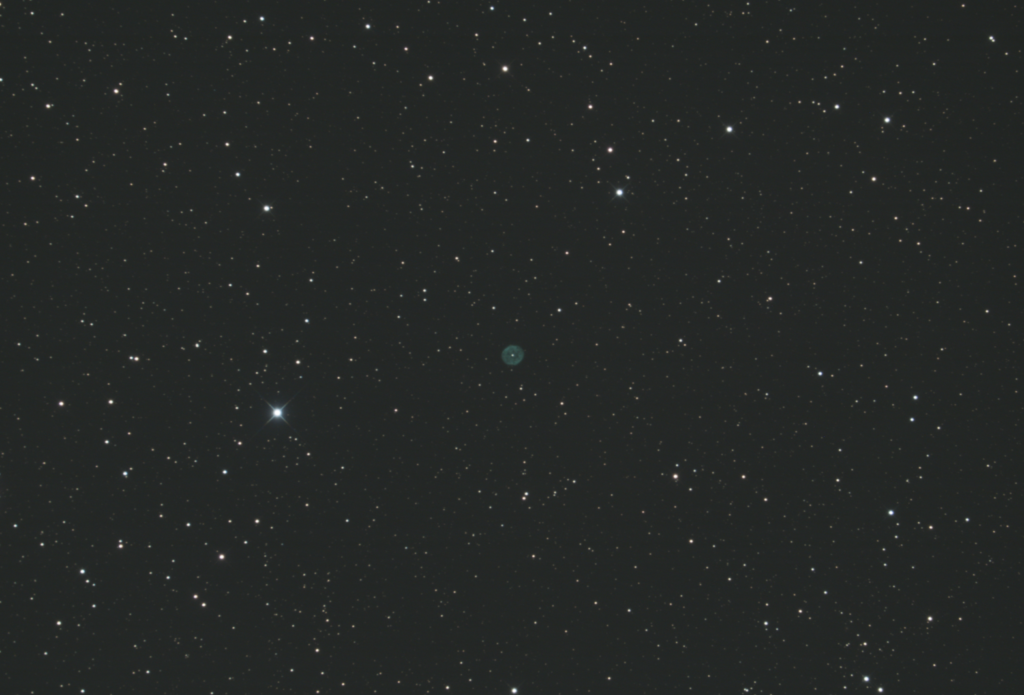
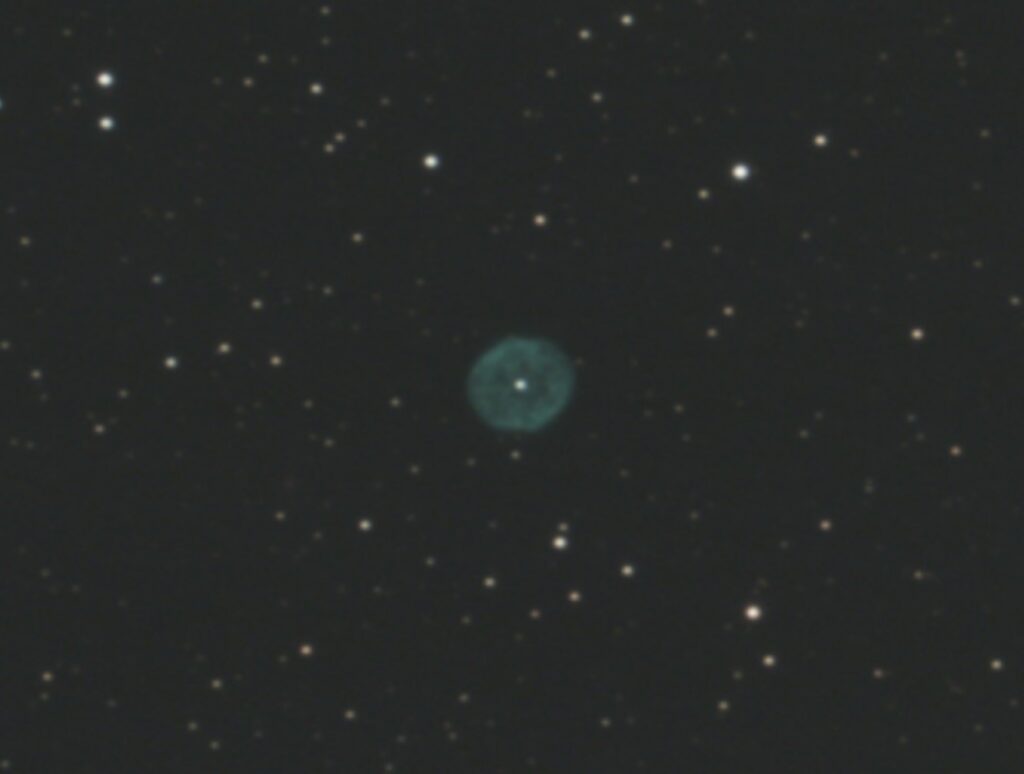
At last. Something that isn’t a star, where I can see colour. A green/blue, maybe duck egg blue planetary nebula with a radius on the longest dimension of 30 arc sec. I say longest dimension as it very slightly flattened on the North and Southern sides. The background star field is quite sparse, so it looks all lonely out there on its own.
The stellar core is bright white. This is surrounded by a darker circular void that has maybe 6 spiky arms that extend out into the surrounding gaseous envelope. Just East of North on the outer envelope is a small prominence with it’s mirrored other half on the other side to the South.
11 arc min to the East is a bright and hot Spectral B9 7.5 mag star SAO13036.
Image integration Time; 1005 secs
NGC1491, HT4a, Sh2-206
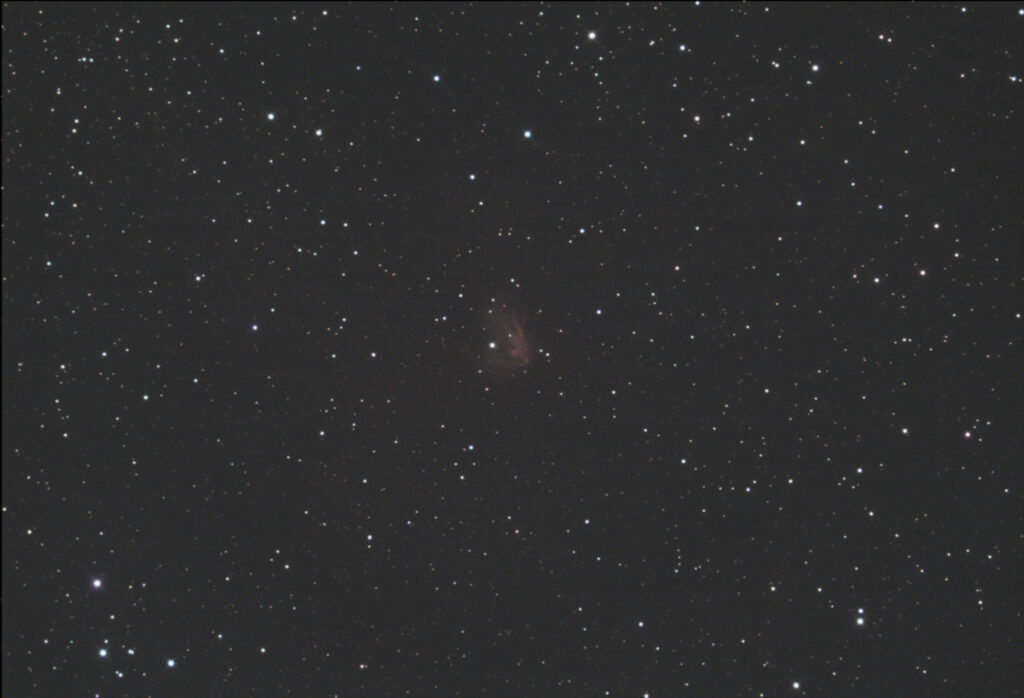
Reminds me of Mcneil’s nebula with its distinctive cometary fan shape. With an overall tinge of Salmon/Orange pink the leading front leads the shape as it points towards the Southwest.
The main body of the nebula passes to the Northwest of an 11 mag star at its centre. The leading Northwestern edge looks like a shock front which wanders in and around darker voids behind it.
I’m getting a hint of green within the darker folds of red, but I’m not sure this is real or not.
Image integration Time; 435 secs